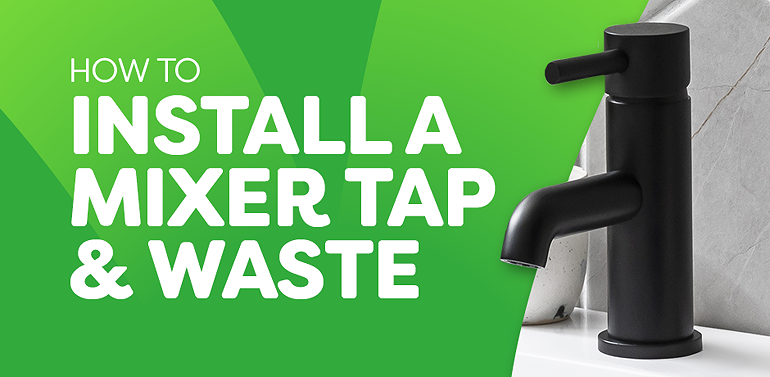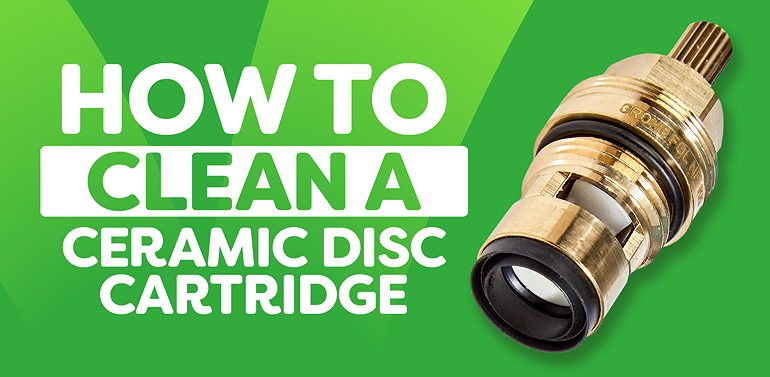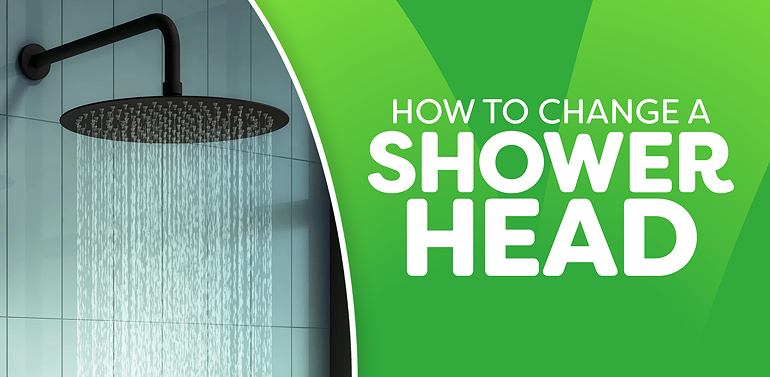EXTRA 10% OFF TILES WITH CODE: TILE10
Free Delivery on Orders Over £499**
how to fit a bathroom sink
How to Fit a Bathroom Sink
Has it been a while since you've had to fit a bathroom sink or is this your first basin installation? Either way, this handy 8 step guide will show you how to fit a sink in no time at all!

A wobbly, leaking sink in your bathroom is the last thing you need. Whether you’re replacing an old basin or installing from scratch, this straightforward, step-by-step guide will help you get the job done quickly, correctly, and without stress. Let’s get started.
Fitting a Bathroom Sink: The Quick Steps
Follow our 8 simple steps to fit your bathroom sink efficiently.
Quick Installation Steps:
- Turn off the water supply – Shut off isolation valves or turn off the mains.
- Position and mark the sink – Find the centre, check the level, and mark fixing points.
- Install the taps – Secure taps in place and connect flexible pipes.
- Fit the waste and trap – Insert the waste, seal it with silicone, and attach the trap.
- Secure the sink – Fix the basin to the wall and align it with the pedestal.
- Connect the water pipes – Attach hot and cold inlets to the taps.
- Turn the water back on – Check for leaks and ensure everything is working.
- Seal around the basin – Apply silicone for a clean, watertight finish.
Want a visual walkthrough? Watch our step-by-step video guide below.
*We always advise our DIY-ers to seek professional help before tacking any of our tutorials.
Watch the Installation in Action
See these steps in action with our step-by-step video tutorial below.
What You’ll Need
Before you start, gather these essential tools for fitting your bathroom sink:
- Silicone sealant
- Pliers & adjustable spanner
- Screwdrivers & plumbing sockets
- Pencil, drill & spirit level
- Tape measure
- Bucket & old sheet (for spills)
Step-by-Step Guide: How to Install a Bathroom Sink
Step 1: Turn Off the Water Supply
- Locate the isolation valves under the sink and turn them off.
- If your taps don’t have isolation valves, shut off the water at the mains.
- Open the taps to drain any remaining water.
Step 2: Position and Mark the Sink
- Find the centre using a spirit level and mark it on both the wall and floor.
- Place the pedestal and basin in position, ensuring they are level.
- Mark the basin outline and fixing holes on the wall.
If your pedestal has fixing holes for the floor, mark those too.
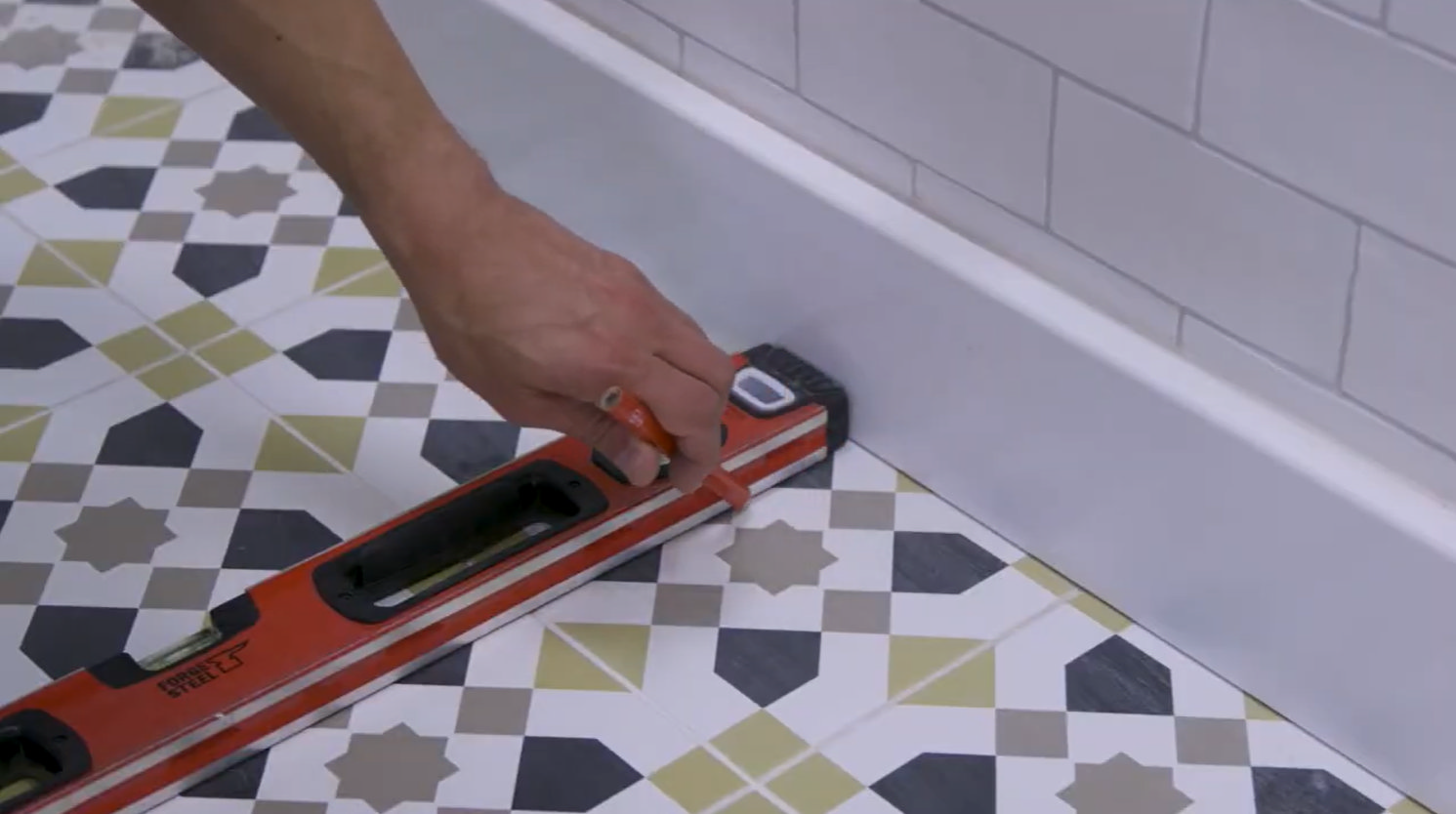
Step 3: Install the Taps
- Insert the tap into the pre-drilled hole in the basin.
- Secure it underneath with the washer and nut.
- Connect the flexible tap connectors or copper pipes.
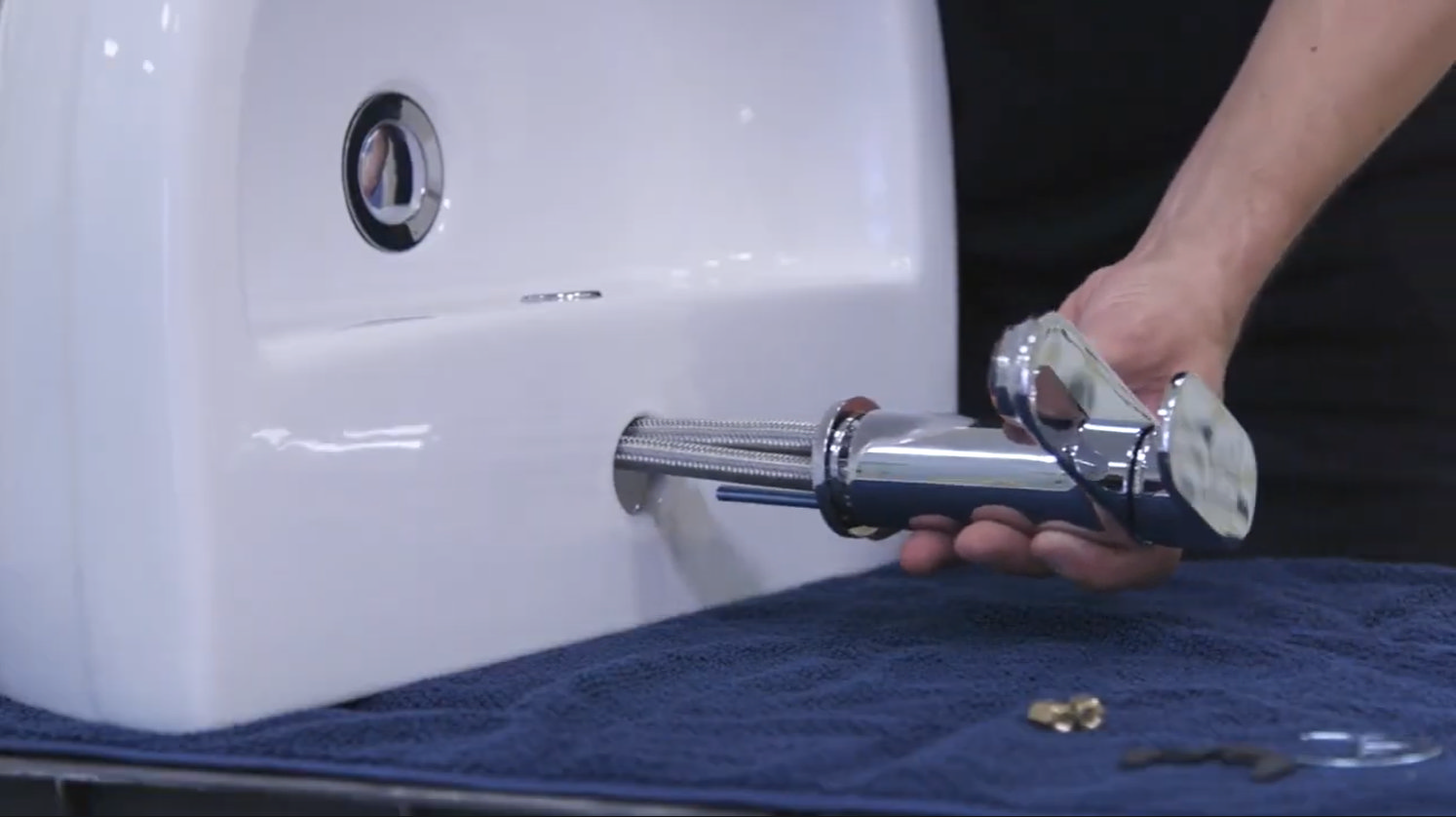
Step 4: Fit the Waste and Trap
- Insert the waste into the plughole, aligning overflow holes if necessary.
- Apply silicone around the thread to prevent leaks.
- Tighten the washer and nut.
Connect the waste trap:
- Wall-mounted waste pipes → Use a P-trap.
- Floor waste pipes → Use a straight trap.
Step 5: Secure the Sink to the Wall
- Drill holes for the fixing bolts – use masking tape on tiles to prevent slipping.
- Insert wall plugs and fix the bolts.
- Carefully position the basin onto the pedestal and secure it using the provided fixings.
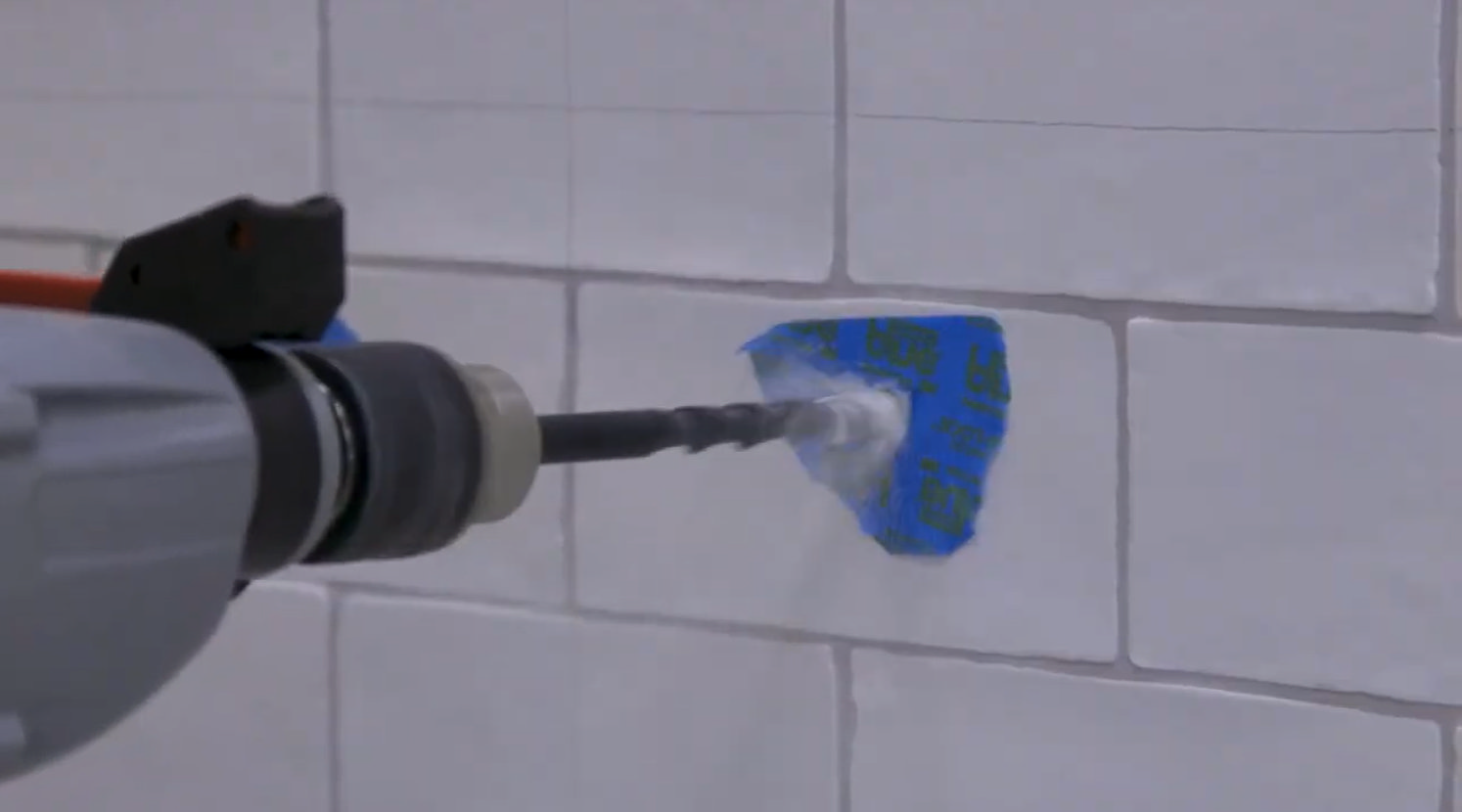
Step 6: Connect the Water Pipes
- Attach the hot and cold inlets to the taps.
- Use compression fittings or push-fit connectors to secure the connection.
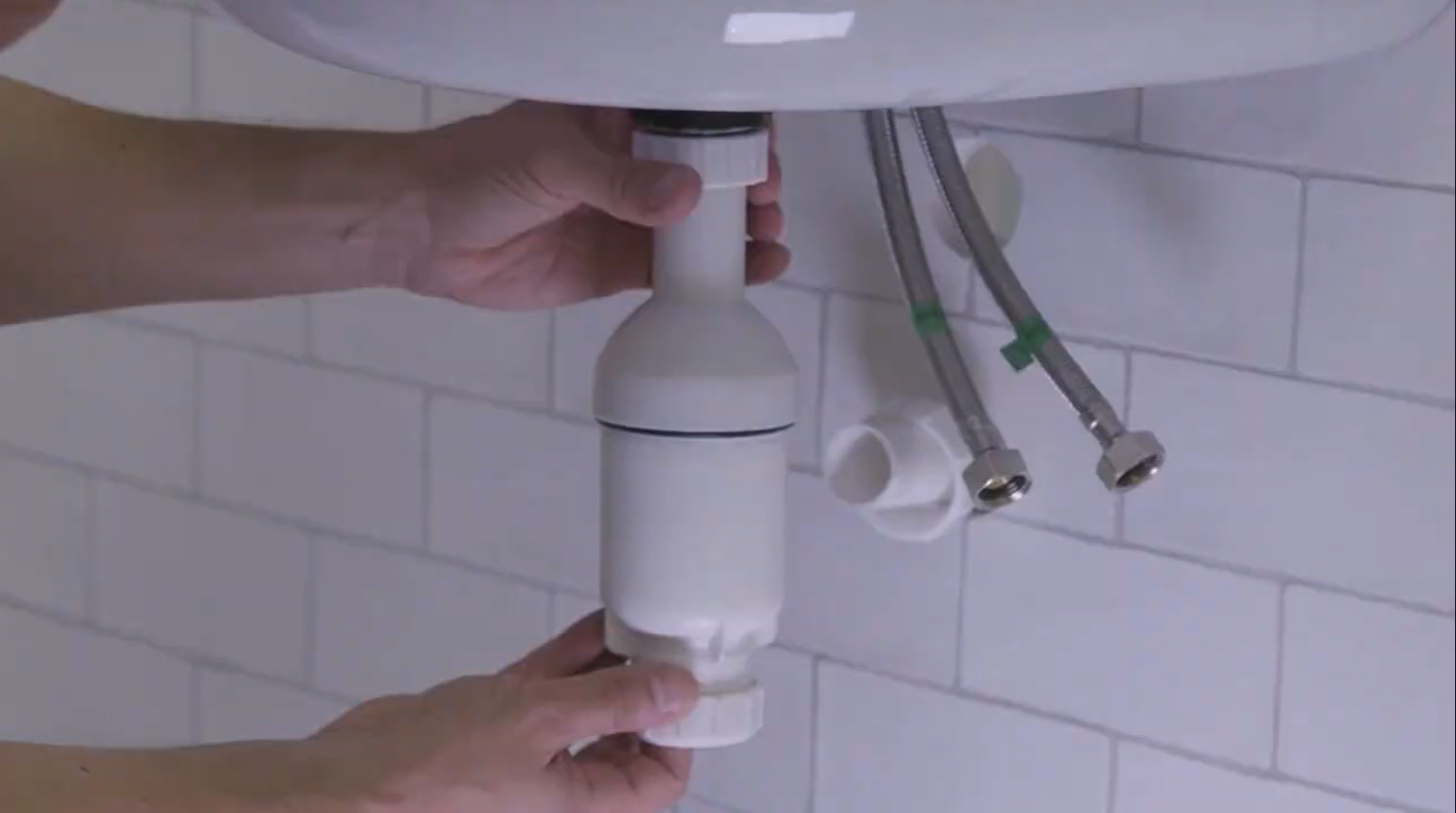
Step 7: Turn the Water Back On
- Slowly turn on the isolation valves or mains water supply.
- Check the taps for proper function and inspect for any leaks.
Step 8: Seal Around the Basin
- Apply a thin, even bead of silicone where the basin meets the wall.
- Use masking tape for a clean, straight edge.
- Smooth the seal with a damp finger or sealant tool.
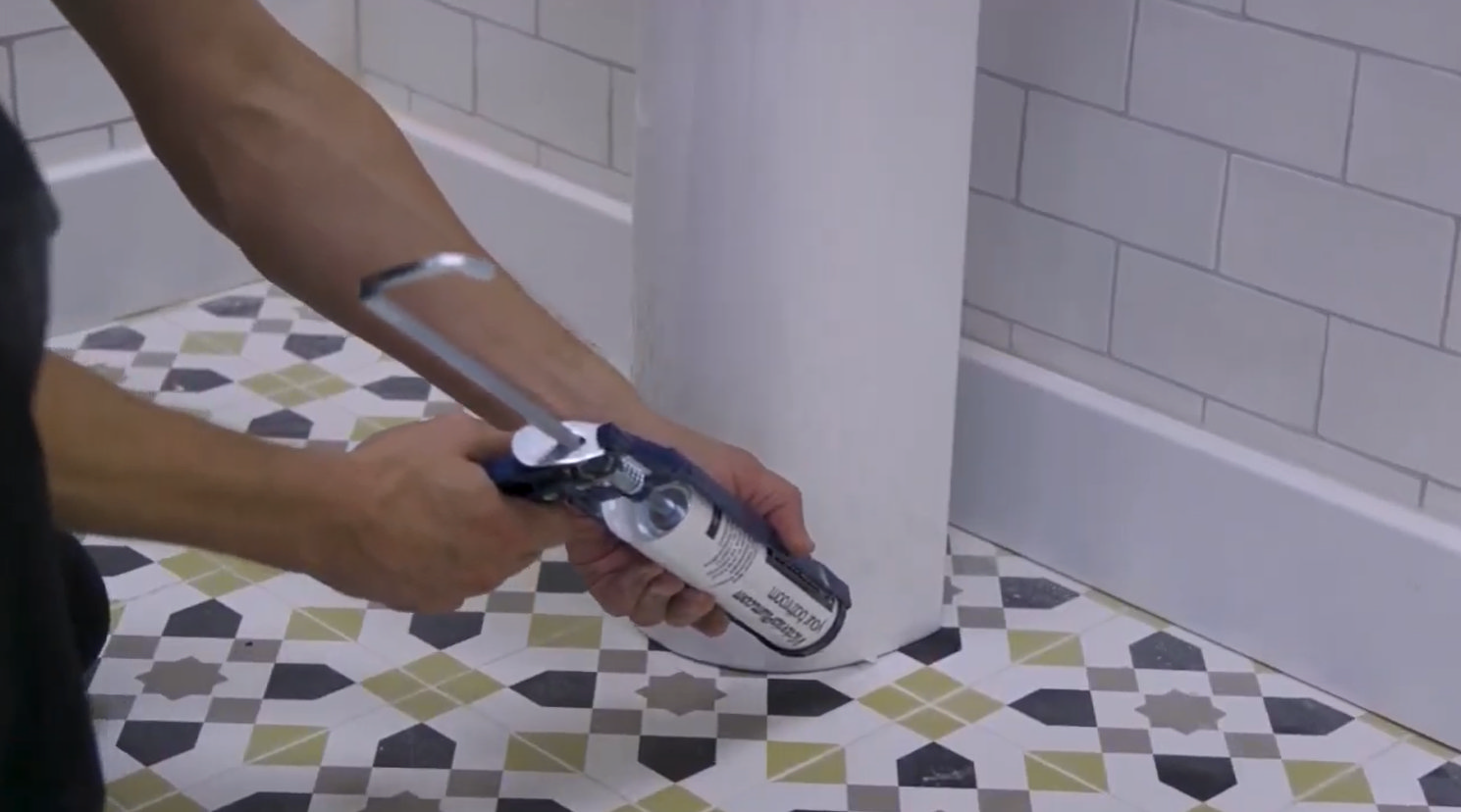
Additional Tips for a Smooth Installation
Check the wall type:
Masonry walls → Support all basin types.
Stud walls → May need reinforcement for wall-hung basins.
Choose the right basin height:
- Standard: 85 cm from floor to basin rim.
- Children: Lower for easy access.
- Tall adults: Raise slightly for comfort.
- Accessibility needs? Adjust accordingly.
Time required:
- Replacing an existing basin? Around 2 hours.
- Installing from scratch? Allow up to 5 hours.
What’s Next?
Now that your new basin is installed, why stop there? Elevate your DIY game with our expert guides:
- Explore More DIY Installation Guides – Toilets, showers, taps, and more.
- Discover Bathroom Design Inspiration – Latest trends and styling ideas.
- Browse Our Bathroom Buying Guides – Expert tips for making the right choices.
If this guide helped, share it with a friend who might need it!

